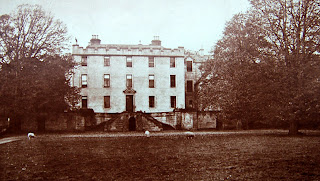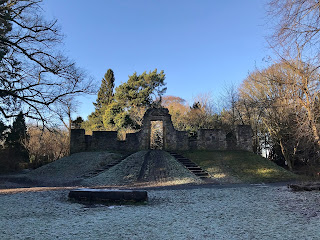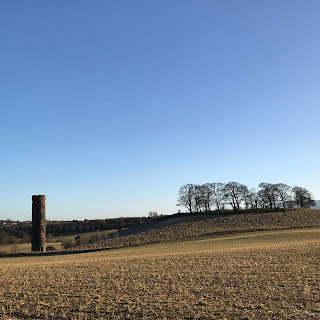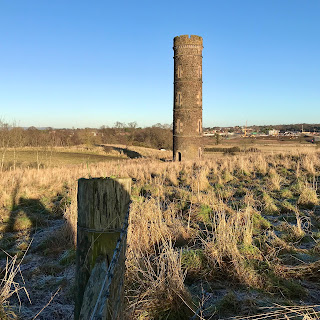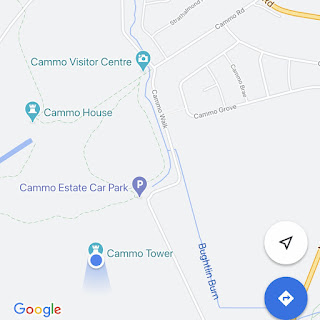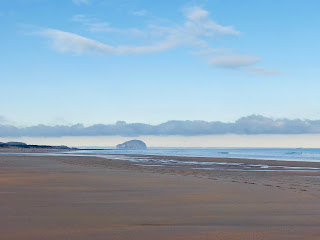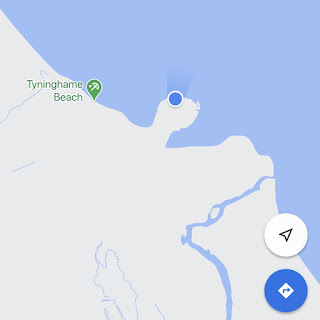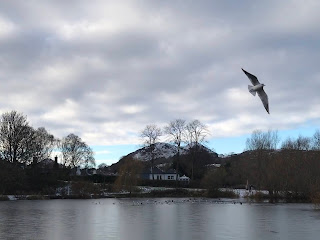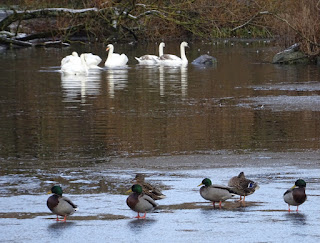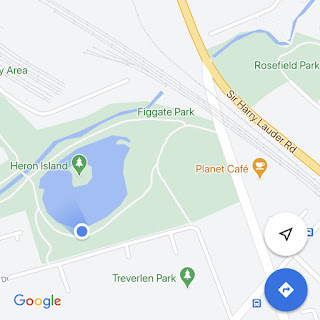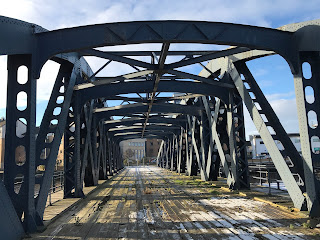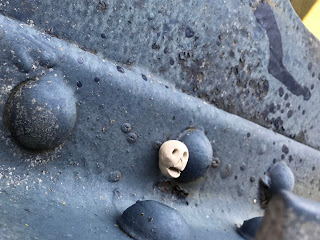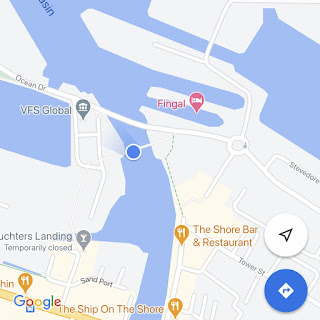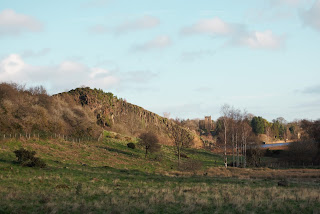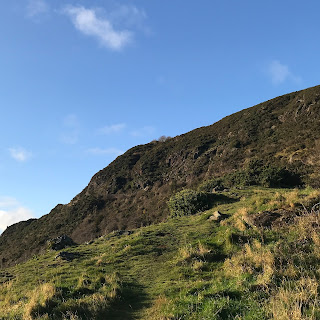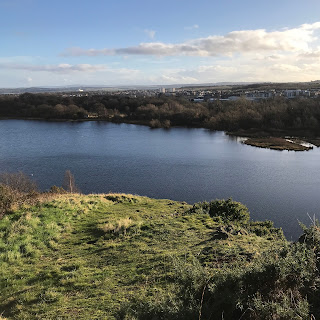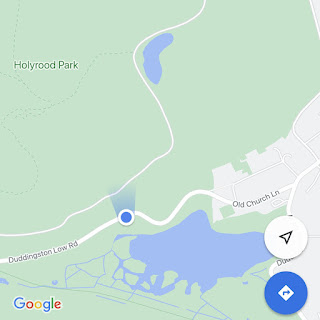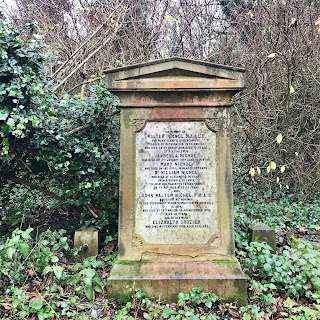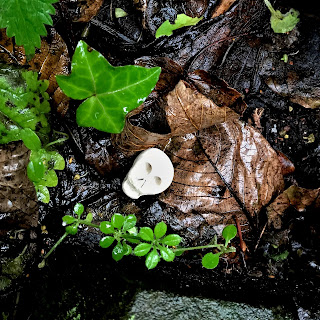I do like a good wander round an old
graveyard, and not just because I’m an ageing Goth. They are great places for quiet contemplation and for getting one’s life into perspective. As you walk round tomb after tomb of the
great and the good, the self-important and the lowly it really does show you
that life is just so fleeting. That death
not only comes to us all, but is also a great leveller. Yes, some will have monuments towering up
above them, but beneath they are just bones, clay or dust. One day that is all any of us will be. So, on that happy note, my latest walk was to
and around Warriston Cemetery in Edinburgh.
This is one of my favourite of Edinburgh’s old cemeteries, as it is
quiet and relatively peaceful, or was until Covid came along and everyone was
looking for new places to discover and walk around.
Bridge leading into part of Warriston Cemetery
Gravestones covered in ivy
The cemetery is full of the graves of
many of Edinburgh’s Victorian elite.
There are artists, poets, mathematicians and scientists lying in their
damp graves alongside the merchants and lawyers of the city. With the wonders of Google, you can look up
lots of them and find out bits and pieces about their lives.
Gravestones in Warriston Cemetery
On this visit I came across the grave
of the Nichol family. I was intrigued by
the few lines written about John Walter Nichol – ‘Assistant Astronomer in the
Government “Venus” Expedition to Honolulu in 1874. So, I had to look this up to see what it was
all about.
Gravestone for Nichol Family
Inscription for John Walter Nichol
In 1874 a group of British scientists travelled
to Hawaii to observe the transit of Venus.
This is when the planet Venus passes directly between the sun and a
‘superior planet.’ When this happens
Venus can be seen from Earth as a small, black dot moving across the sun. The purpose of the expedition to Hawaii was
to obtain an accurate estimate of the distance from the Earth to the sun.
It would seem that the tropical climate and the
insects of Hawaii did not agree with the British scientists and Nichol is
mentioned in a letter by one of his colleagues
who writes that – ‘…When it became necessary to commence the computing we found
the mosquitos so troublesome it was almost impossible to do anything. Nichol presented a mass of sores over his
face and hands and Ramsden couldn’t sit at the table five minutes.’ (Michael E Chauvin - The Hawaiian Journal of
History – Page 199). The scientists were
also disturbed from their work on numerous occasions by King Kalakaua of Hawaii
and the locals, who all took a keen interest in what they were doing. However, despite all of this the scientists carried
out their observations and detailed and noted their calculations.
A collection of the documents,
photographs and sketches from this expedition were digitised and are available
from the Cambridge Digital Library. Many
of the sketches depict Nichol and other members of the team, as do the
photographs. These can be accessed at -
https://cudl.lib.cam.ac.uk/collections/tov/1
By coincidence, while Googling for info
on John Walter Nichol I found that there was a talk by Dr Rebekah Higgitt that
evening about him and the expedition to Hawaii.
For anyone interested in details of the expedition and Nichol’s life and
career, this talk is now available on the Astronomical Society of Edinburgh’s
website. From this I learnt that Nichol
was known as Walter, rather than John and seemed to be a popular member of the group
who went out to Hawaii. That before
joining this expedition he had been a shipping clerk at Leith, before going on
to work as the second Assistant at the Royal Observatory in Edinburgh. After the expedition to Hawaii he returned to
Britain with the other members of the team and they all wrote up their findings
at Greenwich. He then went to Leipzig
where he studied under Professor Karl Bruhns.
On his return to Britain he died suddenly
of a pulmonary infection on 4 November 1878.
I left Nichol
and his family a Skulferatu.
Skulferatu #8
Skulferatu #8 by the Nichol's gravestone
As I then walked around the graveyard,
I found that on another old grave someone had left a small, handmade ceramic
cat. Maybe someone else leaving little mementos?
Google Map showing location of Skulferatu
The coordinates for the location of the
Skulferatu are: Latitude 55.968509 Longitude -3.196384.
